Newsletter
Eat your way across L.A.
Get our weekly Tasting Notes newsletter for reviews, news and more.
You may occasionally receive promotional content from the Los Angeles Times.

Not all kimchis are made the same. Some are extraordinary.
Baechu kimchi — kimchi made with napa cabbage — is the standard-bearer at most Korean restaurants, typically served as soon as your order is placed. It’s the go-to style of kimchi on most dinner tables and what’s generally stocked in the largest supply at Korean grocery stores and kimchi shops.
But there are hundreds of types of kimchi that can be enjoyed in a variety of ways.
We asked some connoisseurs to riff on some of their favorite kimchis and kimchi dishes and where they go to get their fix around L.A.
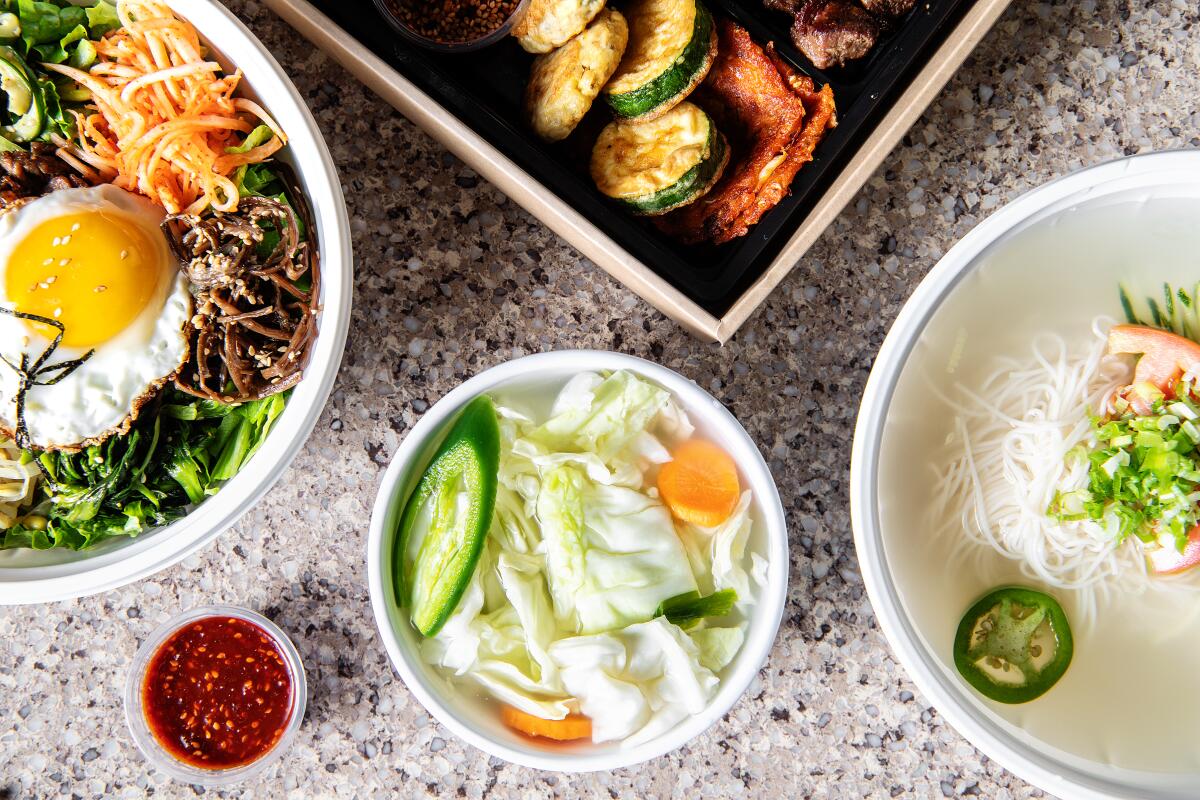
Dongchimi is a water-based kimchi. Radishes and cabbage swim in a cold, slightly opaque brine. Popular in colder, northern regions on the Korean peninsula, its fermentation time is short.
Where to find it: Gil Mok (the Corner Place), 2819 James M. Wood Blvd., Los Angeles, (213) 487-0968
Gil Mok might be a Korean barbecue restaurant, but the cavalcade of meat really serves as the perfect setup for its dongchimi guksu — noodles served in the cold, slightly sweet and tingly brine.
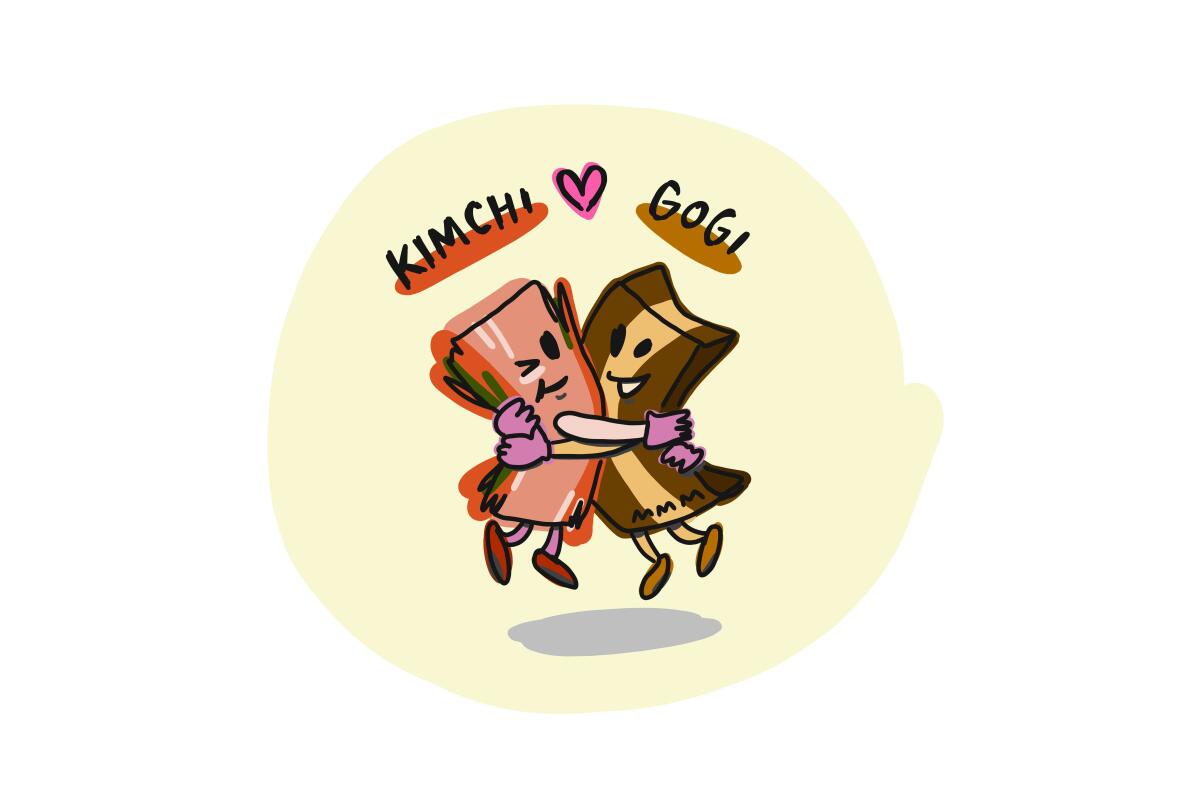
Contrary to local chatter, the sweetness and effervescent sensation in Gil Mok’s dongchimi doesn’t come from 7 Up but from a little bit of sugar that’s added during the closely monitored fermentation process, said owner Soo-in Kim. “We have to constantly watch out for the fermentation, for the best timing to serve. It depends on the weather,” he added.
Kimchi kudos:
“It just reminds me of summer. There’s ice in it, and it’s just refreshing. … I just picture grabbing it by the bowl and sipping the broth straight.” — Jonathan Park/Dumbfoundead, rapper
“My mouth is drooling just thinking about it. You can’t get some of that stuff here [in New York]. Every time I would go back home [to Oregon] on breaks from college, my mom would make me kalbi with dongchimi, and it was one of my favorite combinations of taste. Between dongchimi and ganjang gejang (raw crabs marinated in soy sauce), those are two things that I miss so much.” — Michelle Zauner/Japanese Breakfast, musician

Chonggak kimchi translates to “bachelor kimchi.” Made with white ponytail radishes, the green stems are said to resemble the braids once sported by unwed Korean men.
Where to find it: Most Korean grocery stores and kimchi shops carry jars and bags of chonggak kimchi year-round.
Kimchi kudos:
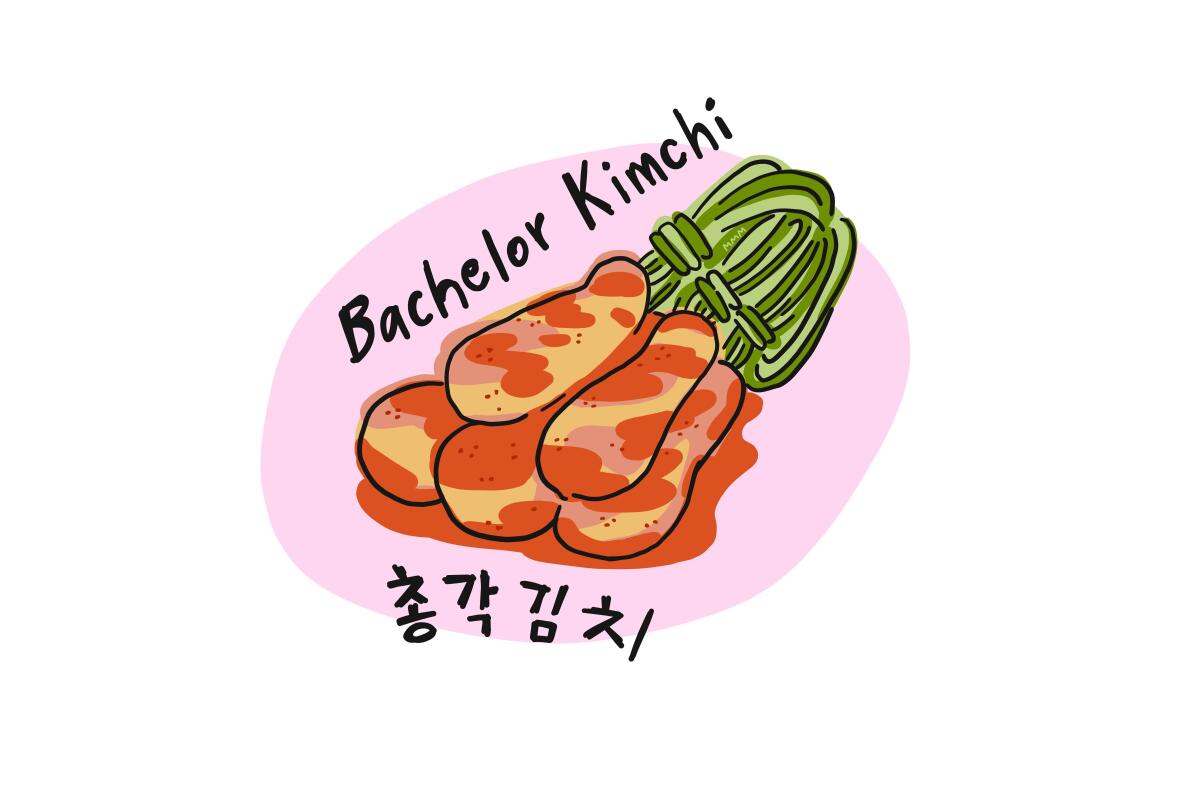
“Chonggak kimchi is my jam. Really, really sour kimchi. My aunt and I always had this shared love of chonggak kimchi, and we used to joke it was because we’re two bachelors. … Chonggak kimchi is the most underrated kimchi.” — Michelle Zauner
“Chonggak kimchi was my favorite. You get the texture of the radish and the leaves, and you can alternate between [the] two of them. If the radish is really sweet and juicy, you get that brisk juice when you bite into it.” — Kim Chi, drag queen

Kkakdugi is made with all the same ingredients used in baechu kimchi, with one notable exception: Daikon radish is used rather than napa cabbage. The cubed radishes produce a satisfying crunch like chonggak kimchi.
Where to find it: Han Bat Sul Lung Tang, 4163 W. 5th St., Los Angeles, (213) 383-9499
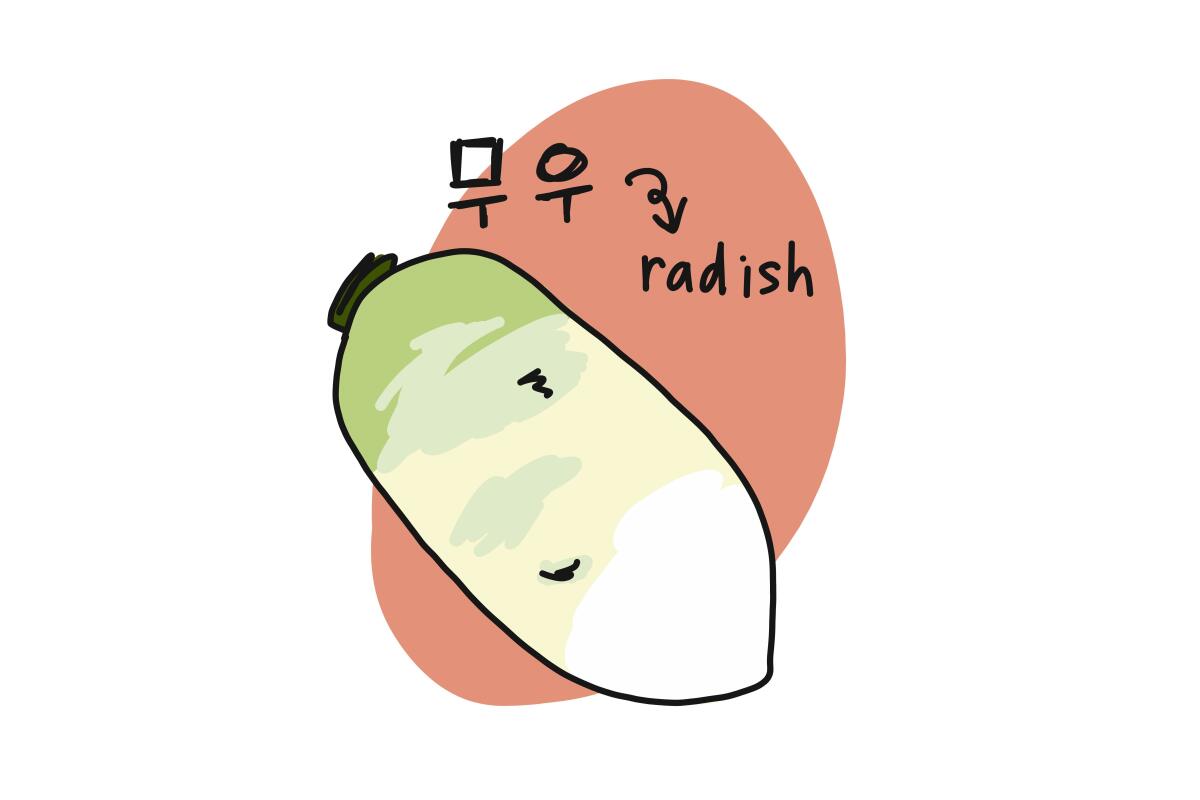
Like many Korean restaurants, Han Bat specializes in a single dish. People come here for the seolleongtang (ox bone soup), but a meal from Han Bat seems incomplete without cubes of kkakdugi to munch on in between spoonfuls of rich milky broth. Pro tip: Throw a few pieces of kkakdugi and the juice directly into the seolleongtang for added flavor.
Kimchi kudos:
“Han Bat was my introduction to kkakdugi. I just remember dipping these cubes into my seolleongtang and taking it out and seeing this plain radish. Kimchi and kkakdugi helped me eat vegetables without thinking of them as vegetables.” — Jonathan Park

This variety of kimchi, made with young summer radishes, is especially popular during warmer months. The taproots are smaller and often trimmed, letting the radish greens shine.
Where to find it: Hangari Kalguksu, 3470 W. 6th St., Suite 9-10, Los Angeles, (213) 388-2326

Hangari Kalguksu is best known for its noodle dishes — specifically its namesake kalguksu, knife-cut noodles served in a hot broth. Yeolmu kimchi comes standard with the restaurant’s banchan offerings but takes on an added dimension when it’s mixed with barley rice and other ingredients in bibimbap.
Kimchi kudos:
“After you order, they bring out boribap (barley rice), doenjang (fermented bean paste) and yeolmu kimchi, and you mix them all up together. To me, that is a flavor that brings back memories of Korea. All those flavors combined — the roasted flavor of bori (barley), the salted flavor of doenjang, the sour but refreshing yeolmu kimchi — all harmonize together. If you know, you know. If you don’t know, I’m sorry about your life.” — Kim Chi
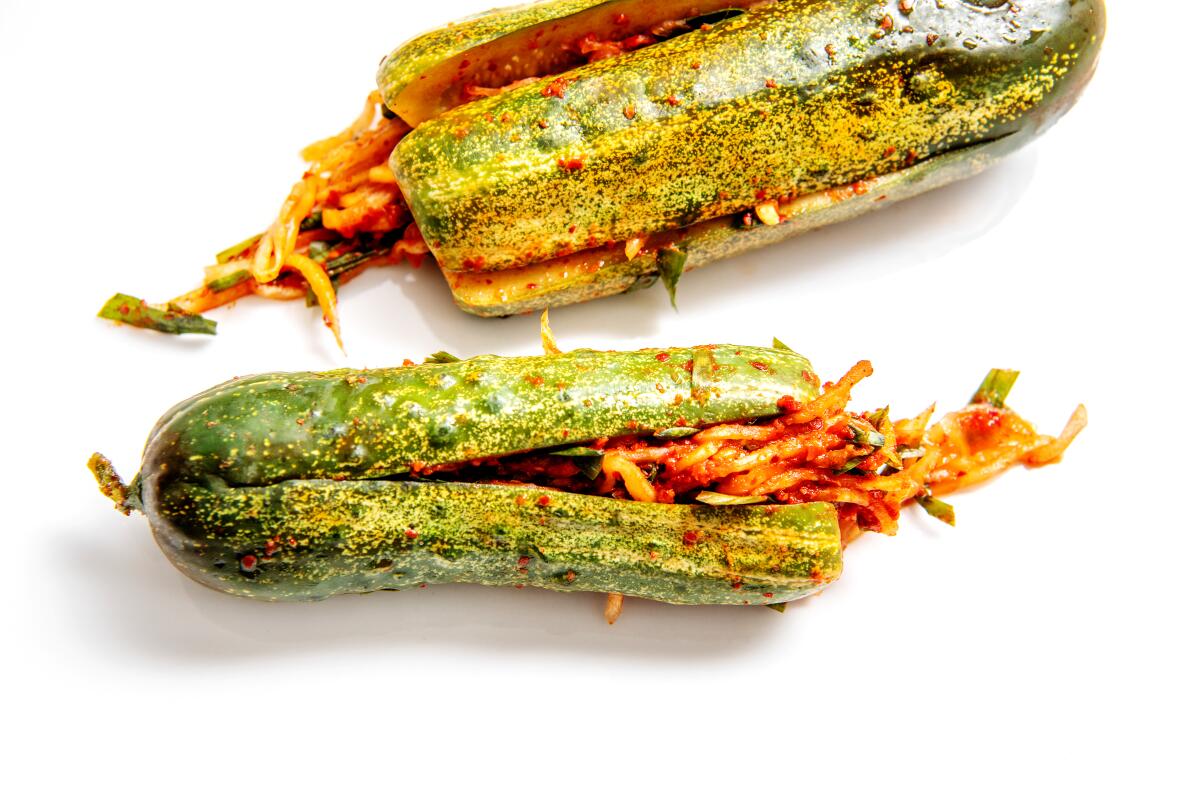
Whole cucumbers are salted, then sliced lengthwise to create an internal pocket where a mixture of Asian chives, carrots, fish sauce and gochugaru (red pepper flakes) are stuffed inside. Oi-sobagi can be eaten immediately or allowed to ferment and is a popular kimchi during the summertime.
Where to find it: Korean grocery stores and kimchi shops will likely have oi-sobagi in stock throughout the year, but you’re sure to find it during the warmer spring and summer months when cucumbers are in season.
Kimchi kudos:
“That’s the No. 1. That’s like the Bellagio of kimchis. There’s so much work that goes into that one too. You have to quarter the cucumber but not all the way so you can stuff it.” — Chris Oh, chef
Other must-try kimchis and kimchi dishes ...
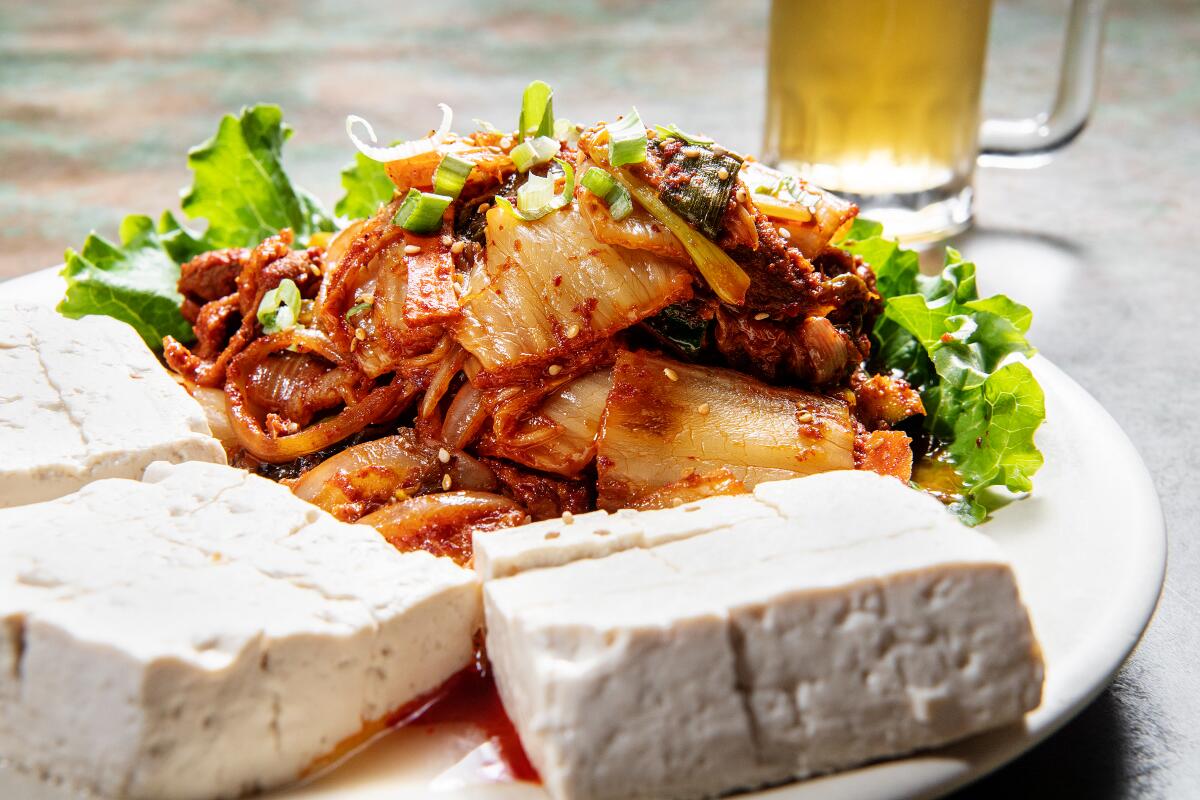
This dish, which combines slices of tofu stir-fried with well-fermented kimchi and fatty slices of pork, is a go-to anju, an entire class of Korean dishes meant to be enjoyed while drinking beer and soju.
Where to find it: OB Bear, 3002 W. 7th St., Los Angeles, (213) 480-4910
OB Bear is where you go in Koreatown to have a drink, eat chicken wings and watch the Dodgers honorably trounce the Houston Asterisks. Dubu kimchi is standard fare at most Koreatown drinking establishments, but OB Bear tries to distinguish itself by using pork neck meat instead of pork belly.
“It’s a savory balance of flavors,” said general manager Justin Lee. “It’s got the spice, the sharp acidity and umami.”
Kimchi kudos:
“Dubu kimchi just works. The tofu is plain because they don’t do anything, but the kimchi is an intense flavor so it just balances it out when you eat both those things.” — Jonathan Park
One of the most popular Korean stews, kimchi jjigae works best with ripe kimchi that’s been left to ferment in its juices.
Where to find it: Seongbukdong, 3303 W. 6th St., Los Angeles, (213) 738-8977
Although the restaurant takes its name from a neighborhood in Seoul, its food is in the style of the Gyeongsang province, which, like its southerly neighbors, produces bold flavors.
Kimchi kudos:
“My grandma didn’t even make [kimchi jjigae] like that. If there was one official Korean grandma we all came from, that’s how she’d make her kimchi jjigae.” — Jonathan Park
“If I don’t have kimchi jjigae at least once a week, I feel hollow. It’s kind of like that scene in ‘Spirited Away’ where the girl is eating the rice ball — otherwise she’d disappear. That’s how I feel if I don’t have that taste, that fullness from a really dank kimchi jjigae. That’s probably the ultimate food for me.” — Michelle Zauner

Kalguksu put Myung Dong Kyoja on the map, but it’s the garlicky kimchi that keeps people coming back. Fresh batches are prepared daily and available in take-home jars.
Where to find it: Myung Dong Kyoja, 3630 Wilshire Blvd., Los Angeles, (213) 385-7789; 1000 N. Euclid St., Anaheim, (714) 533-7789
Kimchi kudos:
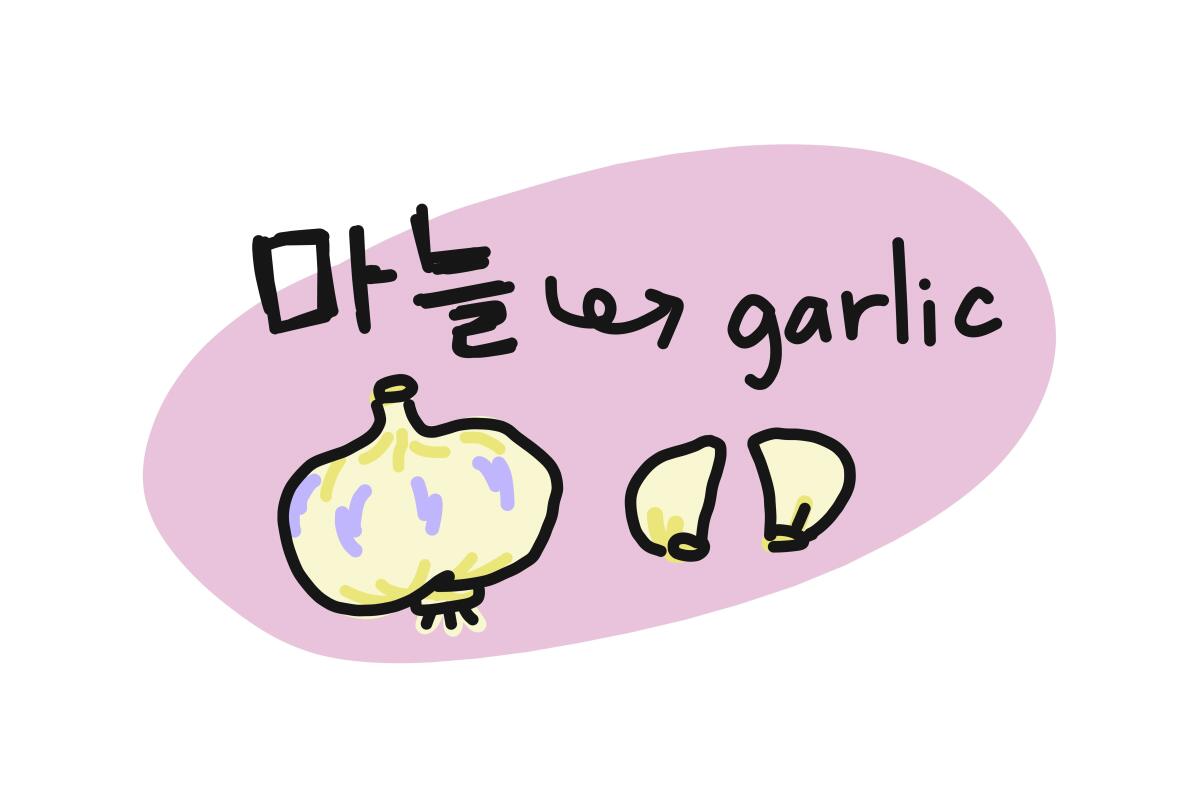
“I love the taste of that kimchi, but it’s really strong on your breath, and there’s not a lot ... you can really do after that. If you’re eating that, you’re dedicating yourself to ‘I’m chilling at the crib tonight.’ ” — Jonathan Park
“That’s my mom’s favorite kimchi. Every time she comes to visit me in L.A., once she gets off the plane, we drop her luggage off at the hotel and then we go to Myung Dong Kyoja, and we eat kalguksu, and she loads up on that kimchi. It is so garlicky, and it’s so good.” — Kim Chi
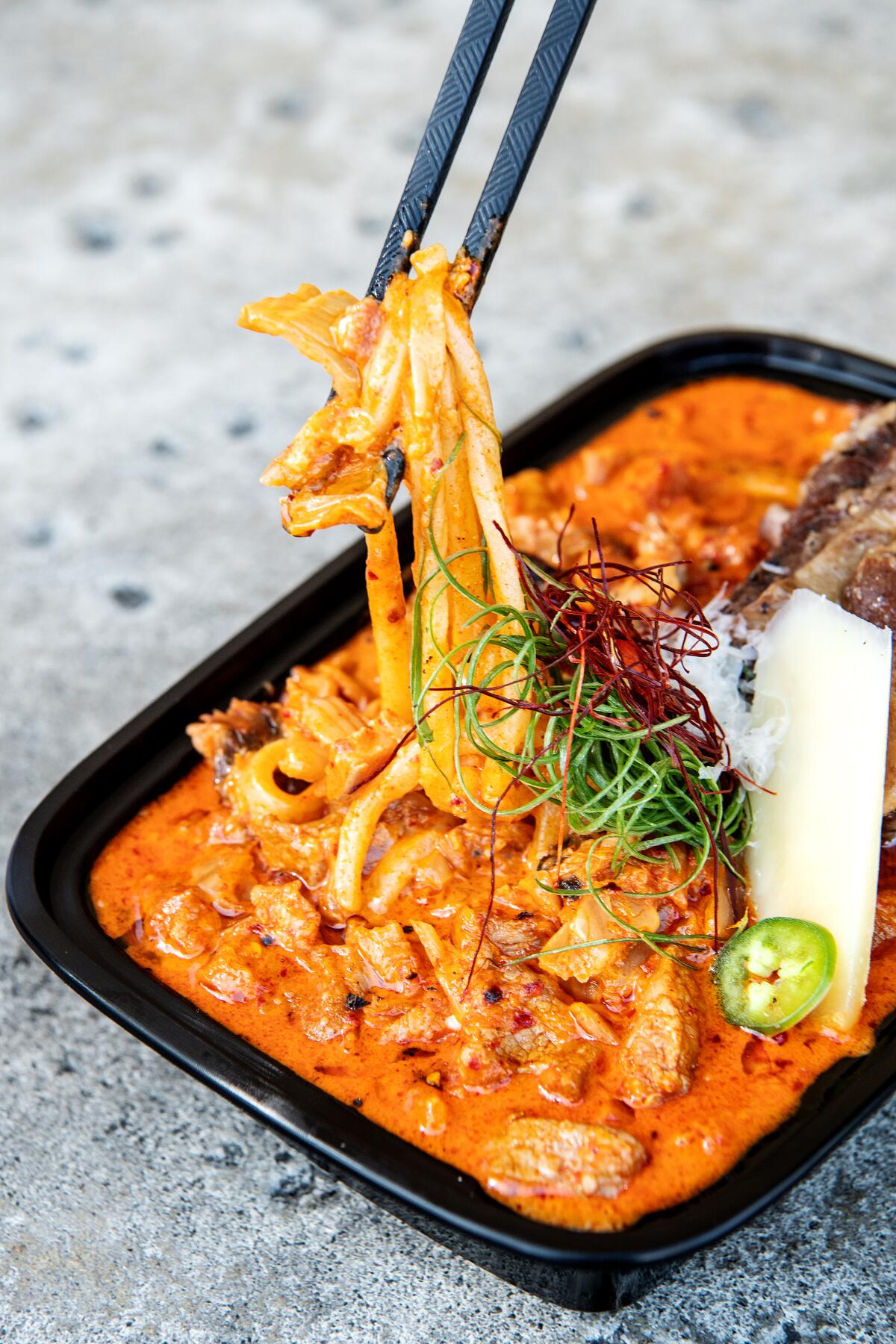
A favorite of our restaurant critic Bill Addison, kimchi pasta isn’t officially on the menu at Spoon by H, but it’s something owner Yoonjin Hwang will make if she has the ingredients on hand. The noodles will vary depending on what Hwang has in stock but the outcome is a rich, creamy noodle dish punctuated by sharp fermented bites.
Where to find it: Spoon by H, 7158 Beverly Blvd, Los Angeles, (323) 930-0789
Kimchi kudos:
“[Yoonjin Hwang] is such a sweet lady, and I feel like she’s my sister or something because that’s what she makes me feel like when I’m there. … This is going to sound so American to me, but she makes this kimchi pasta — I know, I know. But this kimchi pasta is really good. It’s the rich, creamy cheesy sauce paired with the sour kimchi. Oh my God.” — Kim Chi
Eat your way across L.A.
Get our weekly Tasting Notes newsletter for reviews, news and more.
You may occasionally receive promotional content from the Los Angeles Times.